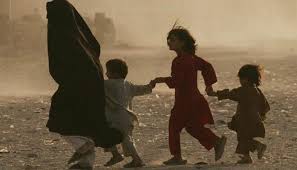What was the Real Cost of the U.S. War in Afghanistan?
As we unwind our war in Afghanistan, after twenty years of armed conflict and occupation brought about post-9/11, what is the real cost to the United States and the people of the Middle East? It is important to take a reckoning on this, as we should never engage in this type of armed  conflict again, a lesson we should have learned from our war in Vietnam. The Cost of War Project at Brown University (https://watson.brown.edu/costsofwar/) has some main findings from their research on the United States’ post-9/11 armed conflicts.
conflict again, a lesson we should have learned from our war in Vietnam. The Cost of War Project at Brown University (https://watson.brown.edu/costsofwar/) has some main findings from their research on the United States’ post-9/11 armed conflicts.
- At least 801,000 people have died due to direct war violence, including armed forces on all sides of the conflicts, contractors, civilians, journalists, and humanitarian workers.
- Many times more have died indirectly in these wars, due to ripple effects like malnutrition, damaged infrastructure, and environmental degradation.
- Over 335,000 civilians have been killed in direct violence by all parties to these conflicts.
- Over 7,000 US soldiers have died in the wars. Over 30,000 have committed suicide after returning from engagement.
- We do not know the full extent of how many US service members returning from these wars became injured or ill while deployed.
- Many deaths and injuries among US contractors have not been reported as required by law, but it is likely that approximately 8,000 have been killed.
- 37 million people have been displaced by the post-9/11 wars in Afghanistan, Pakistan, Iraq, Syria, Libya, Yemen, Somalia, and the Philippines.
- The US government is conducting counterterror activities in 85 countries, vastly expanding this war across the globe.
- The post-9/11 wars have contributed significantly to climate change. The Defense Department is one of the world’s top greenhouse gas emitters and the largest single consumer of oil in the world.
- The wars have been accompanied by erosions in civil liberties and human rights at home and abroad.
- The human and economic costs of these wars will continue for decades with some costs, such as the financial costs of US veterans’ care, not peaking until mid-century.
- Most US government funding of reconstruction efforts in Iraq and Afghanistan has gone towards arming security forces in both countries. Much of the money allocated to humanitarian relief and rebuilding civil society has been lost to fraud, waste, and abuse.
- The cost of the post-9/11 wars in Iraq, Afghanistan, Pakistan, Syria, and elsewhere totals about $6.4 trillion. This does not include future interest costs on borrowing for the wars, which will add an estimated $6.5 trillion by 2050.
Despite the Pentagon’s assertion that the U.S. is shifting its strategic emphasis away from counterterrorism and towards great power competition with Russia and China, examining U.S. military activity on a country-by-country basis shows that there is yet to be a corresponding drawdown of the counterterror apparatus. If anything, their actions demonstrate that counterterrorism operations have become more widespread in recent years.
From 2018 to 2020, the United States government undertook what it labeled “counterterrorism” activities in 85 countries. the U.S. government conducted operations it explicitly described as counterterrorism, in an outgrowth of President George W. Bush’s “Global War on Terror.” These operations include air and drone strikes, on-the-ground combat, so-called “Section 127e” programs in which U.S. special operations forces plan and control partner force missions, military exercises in preparation for or as part of counterterrorism missions, and operations to train and assist foreign forces. In other words, proxy wars.
We must remember that we the people of the United States never voted for a twenty year war to democratize Afghanistan. On September 18, 2001, Congress voted to “authorize the use of United States Armed Forces against those responsible for the recent attacks launched against the United States”. Congress never again discussed, debated, and decided if, when, where, why, and for how long our troops should be in Afghanistan. Instead, Congress reneged on its Constitutional duty to make what we know today are weighty decisions to go to war, abandoning this representative responsibility to a single person, the President.
Recent Posts
What is a refugee? There are various legal, sociological, and demographic definitions of “refugee” which all have validity. Simply put,…
Politicians from both parties are forever issuing warnings about the “rising national debt” and “risky federal deficits” which are purportedly…
Now that the recent elections are essentially completed, can we return to civil discourse in facing the challenges of our…
Democracy and the Future of the Quest for Freedom Tenth Installment If you’re not careful, the newspapers will have you…